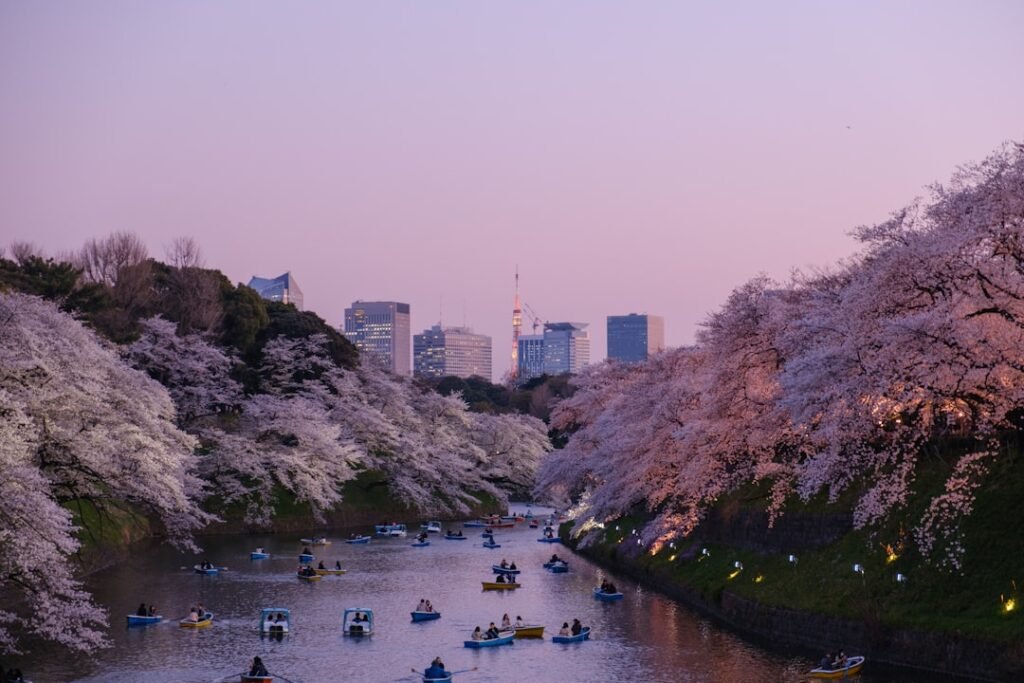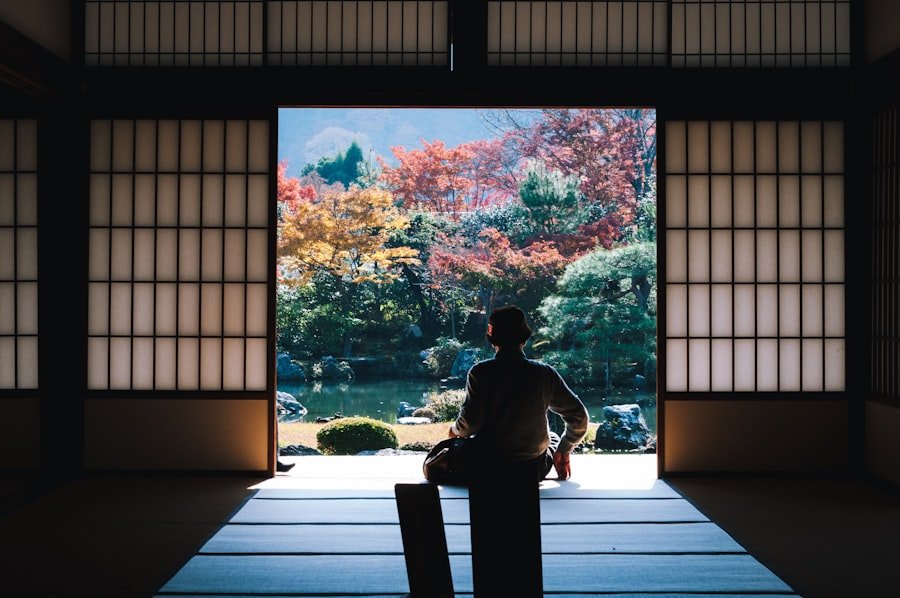

Essential Japanese Phrases for Visiting a Museum or Art Gallery
When entering a new environment, particularly one as culturally rich as a museum, the first step often involves greetings and introductions. A simple “Hello” or “Good day” can set a positive tone for any interaction. In a museum setting, it is customary to greet the staff or fellow visitors with a warm smile and a friendly nod.
This initial exchange not only establishes rapport but also creates an inviting atmosphere conducive to sharing experiences and insights about the artwork on display. In addition to verbal greetings, introducing oneself can enhance the interaction. A brief introduction, such as “My name is Sarah, and I am an art enthusiast,” can open doors to deeper conversations.
It invites others to share their names and interests, fostering a sense of community among visitors. This exchange of names and interests can lead to discussions about favourite artists or pieces, enriching the overall experience of the museum visit. Unlock the rich world of Japanese culture, from anime to ancient traditions.
Table of Contents
ToggleSummary
- When greeting someone in a museum, a simple “hello” or “good morning/afternoon” is appropriate.
- When asking for information, it’s polite to start with “excuse me” or “could you please tell me…”
- When describing artwork, use adjectives like “beautiful,” “captivating,” or “thought-provoking” to express appreciation.
- When seeking assistance, a polite “could you help me with…” or “I’m looking for…” is a good way to start.
- When saying goodbye and thank you, a simple “goodbye” or “thank you” is sufficient, but adding “it was a pleasure” is a nice touch.
Asking for Information
Once inside the museum, visitors often find themselves in need of information regarding the exhibits or facilities. Approaching a staff member with a polite inquiry can yield valuable insights. Phrasing questions such as, “Could you please tell me where the contemporary art section is located?” demonstrates respect and consideration for the staff’s expertise.
This not only helps in navigating the museum but also encourages staff to share their knowledge enthusiastically. Moreover, asking for information can extend beyond mere directions. Visitors might seek details about specific artworks or artists featured in the museum.
A question like, “I am particularly interested in the works of Van Gogh; could you provide me with more information about his pieces here?” not only shows genuine interest but also allows staff to engage in meaningful dialogue. This exchange can lead to discovering lesser-known facts about the artist or even recommendations for similar artists to explore.
Describing Artwork

Describing artwork is an essential skill that enhances appreciation and understanding of art. When standing before a captivating piece, one might begin by noting its visual elements: “The vibrant colours in this painting evoke a sense of joy and energy.” Such observations can lead to deeper discussions about the artist’s intent and the emotions conveyed through their work. Engaging with fellow visitors or staff about specific elements, such as composition or technique, can enrich one’s experience and provide new perspectives.
Furthermore, describing artwork often involves interpreting its meaning or context. For instance, one might say, “This piece seems to reflect the struggles of urban life, with its chaotic lines and dark hues.” Such interpretations invite others to share their thoughts and feelings about the artwork, fostering a collaborative exploration of its significance. This dialogue not only enhances personal understanding but also creates a shared experience among those present.
Expressing Appreciation
Art has a unique ability to evoke emotions, and expressing appreciation for a piece can deepen one’s connection to it. A simple statement like, “I absolutely adore this sculpture; it captures such grace,” conveys admiration and invites others to reflect on their feelings about the artwork. Sharing personal reactions can lead to discussions about what resonates with individuals on an emotional level, creating a rich tapestry of shared experiences.
Moreover, expressing appreciation extends beyond individual pieces to encompass the museum as a whole. Acknowledging the efforts of curators and staff with comments such as, “The layout of this exhibition is fantastic; it really enhances the viewing experience,” shows gratitude for their hard work. Such expressions not only uplift those who contribute to the museum’s success but also foster a sense of community among visitors who share a passion for art.
Asking for Assistance
In any unfamiliar setting, asking for assistance is often necessary and should be approached with confidence and courtesy. Whether it’s locating a specific exhibit or understanding how to use audio guides, reaching out for help is essential for an enjoyable visit. A polite request such as, “Excuse me, could you assist me in finding the nearest restroom?” demonstrates respect for the staff’s role while ensuring that one’s needs are met.
Additionally, assistance may be sought in more complex matters, such as understanding an artwork’s historical context or technical details. Phrasing inquiries like, “Could you explain the significance of this piece within the broader context of modern art?” not only shows curiosity but also encourages staff to share their expertise. This interaction can lead to enlightening conversations that enhance one’s appreciation of art and its history.
Understanding Museum Rules

Every museum has its own set of rules designed to protect both the artwork and its visitors. Familiarising oneself with these guidelines is crucial for a respectful and enjoyable experience. Upon entering, one might notice signs indicating photography policies or restrictions on food and drink.
Understanding these rules helps maintain the integrity of the exhibits while ensuring that all visitors can enjoy their time without disruption. Moreover, engaging with staff about museum rules can provide clarity on less obvious policies. For instance, asking questions like, “Are there any specific guidelines I should be aware of regarding touching the exhibits?” demonstrates a willingness to comply with regulations while also seeking to enhance one’s understanding of proper conduct within the museum space.
This proactive approach fosters a respectful environment that benefits everyone involved.
Discussing Artistic Techniques
Artistic techniques are fundamental to understanding how an artwork is created and what makes it unique. Engaging in discussions about these techniques can reveal much about an artist’s process and intent. For example, one might say, “I am fascinated by the use of chiaroscuro in this painting; it adds depth and drama.” Such observations can spark conversations with fellow visitors or staff who may have insights into the artist’s methods or influences.
Additionally, exploring various artistic techniques can lead to broader discussions about art movements and historical contexts. Posing questions like, “How does this technique compare to those used in Impressionism?” encourages dialogue that connects different styles and periods in art history. This exchange not only enriches one’s understanding but also fosters a collaborative learning environment among art enthusiasts.
Inquiring About Exhibitions
Museums often host temporary exhibitions that showcase specific themes or artists, making it essential for visitors to stay informed about current offerings. Inquiring about exhibitions can lead to discovering hidden gems within the museum’s collection. A question such as, “Are there any upcoming exhibitions that focus on contemporary artists?” demonstrates enthusiasm for engaging with new works while allowing staff to share their knowledge about future events.
Moreover, discussing past exhibitions can provide context for current displays. Asking questions like, “What was featured in last year’s exhibition on abstract art?” allows staff to share insights into how exhibitions evolve over time and how they relate to ongoing trends in the art world. This dialogue not only enhances one’s visit but also fosters a deeper connection with the museum’s mission and vision.
Seeking Directions
Navigating a large museum can sometimes be daunting, especially when trying to locate specific exhibits or facilities. Seeking directions from staff or fellow visitors is often necessary for an enjoyable experience. A polite inquiry such as, “Could you please direct me to the gallery featuring Renaissance art?” shows respect for others’ time while ensuring that one can make the most of their visit.
Additionally, seeking directions can lead to unexpected discoveries along the way. For instance, while asking for directions to a particular exhibit, one might learn about nearby installations or events that pique their interest. This serendipitous exploration adds an element of spontaneity to the visit, allowing for a richer engagement with the museum’s offerings.
Making Reservations or Purchases
In many museums, making reservations for guided tours or purchasing tickets in advance is advisable to ensure a smooth experience. Approaching staff with inquiries such as, “Do I need to book tickets ahead of time for the guided tour?” demonstrates foresight and consideration for planning one’s visit effectively. This proactive approach not only secures a spot but also allows staff to provide additional information about tour highlights or special events.
Furthermore, purchasing items from the museum shop can enhance one’s experience by taking home a piece of art-related memorabilia. Inquiring about available merchandise with questions like, “What types of prints do you have available from featured artists?” allows visitors to engage further with the museum’s offerings while supporting its mission through purchases.
Saying Goodbye and Thank You
As one’s visit comes to an end, expressing gratitude is essential in leaving a positive impression on both staff and fellow visitors. A simple “Thank you for your assistance today” acknowledges the efforts of those who contributed to an enjoyable experience. Such expressions of appreciation foster goodwill and encourage staff to continue providing excellent service.
Moreover, saying goodbye can extend beyond mere words; it can involve sharing reflections on the visit with others encountered during the day. Phrases like, “It was lovely discussing art with you; I hope you enjoy the rest of your visit,” create connections that may last beyond the museum walls. These final exchanges encapsulate the spirit of community fostered within cultural spaces and leave everyone feeling enriched by their shared experiences.
In conclusion, visiting a museum is not just about observing art; it is an opportunity for meaningful interactions and exchanges that enhance one’s understanding and appreciation of culture. The NLS Norwegian Language School in Oslo offers Japanese courses that delve into these very themes—encouraging students to engage with art through language while exploring cultural nuances that enrich their learning experience. By mastering conversational skills relevant to art appreciation and museum visits, students are better equipped to navigate these enriching environments both locally and abroad.
Your Japanese journey starts in Oslo. Join our classes at NLS and sign up today!
If you want to learn Norwegian, you can register for classes here. We look forward to hearing from you and helping you become fluent in Norwegian.





